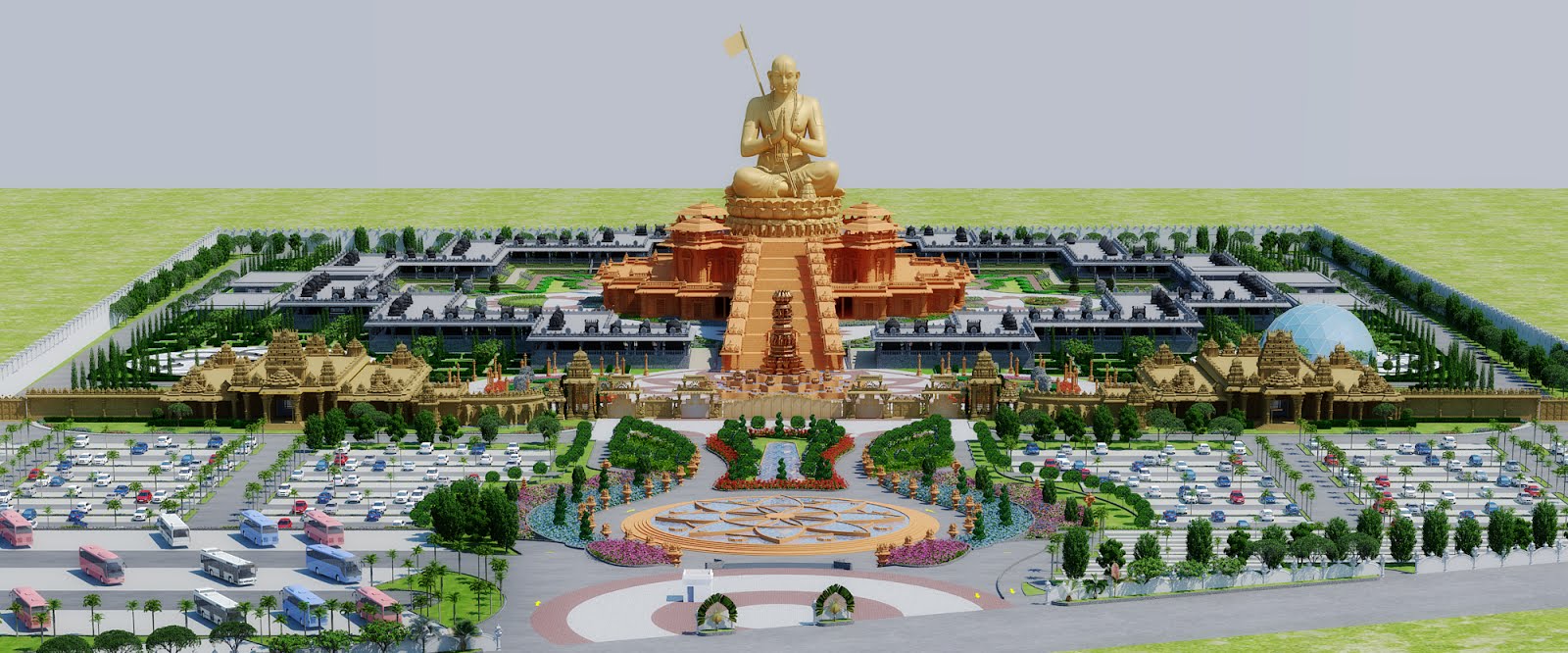Day 4 Sharanagathi Gadyam Pravachanam important points:
Please click the link below to download the recording of pravachanam 4:
Please click the link below to download the recording of pravachanam 4:
·
In the first churnika, Sri
Ramanuja has elaborated about
piratti’s ability to grant facilitate saranagathi.
·
Jeevatma wants involvement in kainkaryam (service) and to have complete belief
in saranagathi (Viswasam).
Churnika
2:
Paramarthika bhagavachcharanaravindha yugala aikanthikathyanthika
parabhakthi paragyana paramabhakthikrutha paripurnanavaratha nithya
visadhathama ananyaprayojana anavadhikathisaya priya bhagavadhanubhavajanitha
anavadhikathisaya prithikaritha aseshavasthochitha asesha seshathaikarithirupa
nithya kainkarya prapthapekshaya, paramarthiki bhagavachcharanaravindha saranagathi:
yathavasthitha avirathasthu me !!
Explanation:
·
Paramarthika means both prayojanam (end result
or goal) and truth.
·
Bhagavach
charana aravindha – the term bhagavan is
added here to highlight the superiority of his feet.
·
Yugala – enjoyment born out of the
pair of lotus feet
·
Aikanthika – there is only one goal, there is
no second
·
Athyanthika – focused on bhagavan alone
·
Parabhakthi – the love of bhagavan is
such that there is joy in his company and sorrow in separation from him.
·
Paragyana – parabhakthi stage blooms into
seeing bhagavan. Thus it is called dharsana
sakshathkaram – i.e.
Having true vision of bhagavan.
·
Paramabhakthi – the end stage of parabhakthi
wherein it is impossible to be away from bhagavan. Life ceases when separation happens. Sri ramanuja initially
asked for gyana, then bhakthi .with these two, bhagavan takes
him to the stage reached by bhakthi yogi so that he attains paramabhakthi
without having to go through the efforts put in by a bhakthi yogi. Beyond this,
sri ramanuja desires other stages as explained below.
·
Krutha – resulting from parabhakthi,
paragnana, paramabhakthi
·
Paripurna – here it refers to the ability to
experience bhagavan‘s swarupa, rupa, guna, vibhava – all at
the same time, completely, without any hurdle. With our limited sensory organs,
it is not possible even to think of enjoying these qualities of bhagavan which
are infinite. Only after attaining parabhakthi, paragyana and paramabhakthi, we
can enjoy these.
·
Anavaratha – experiencing and enjoying bhagavan‘s qualities continuously, without any break.
·
Nithya – permanently, until such time that athma exists.
(since athma always
exists, the experience also will be always existing).
·
Visadha
thama –
the third stage of anubhavam or experience. First stage is visadha which is
attained through parabhakthi. The 2nd stage, visadha thara is attained through
paragyana and the final visadha thama through paramabhakthi.
·
Ananya
prayojana – experiencing and enjoying bhagavan‘s qualities without wishing to experience
anything else.
·
Anavadhika
athisaya priya – love towards bhagavan that
is never reducing despite experiencing continuously, in a wonderful
manner
·
Bhagavadhanubhava – the experience that athma gets
after it leaves behind the last physical form (in which it carried out
saranagathi) and reaches paramapadham (srivaikuntam) through archiradhigathi
(the path that takes the athma through 12 different worlds before crossing vraja
river and getting into srivaikuntam). The bhagavadhanubhavam that one gets in leela
vibhuthi (samsaram –
material realm) is limited while at nithya vibhuthi (srivaikuntam – spiritual realm) it is
unlimited.
·
Janitha
anavadhika athisaya prithi karitha – the bhagavadhanubhavam gives birth
to deep love that is always
overflowing and is wonderful.
·
Asesha
avasthochitha – without leaving anything, in
all states, doing what the Lord desires.
·
Asesha
seshathaikarathirupa – just as ananthalwar (Adhi
seshan) carries out kainkaryam in multifarious ways, carrying out all
kainkaryams in itself becomes the shape of the athma‘s love
·
Nithya – the kainkaryam done is not just
once or twice but for ever, permanently. The athma once
he reaches srivaikuntam, does not every get back to earth for another birth.
Hence it is kainkaryam that is there forever.
·
Kainkarya
prapthi apekshaya – desire for carrying out such
kainkaryam
·
Paramarthiki – being completely and totally
involved in kainkaryam
·
Bhagavath – as one who possesses the 6(gyana, bhala, aiswarya, virya, sakthi, thejas.) Qualities
does not seek anything else in order to reach his lotus feet
·
Charana
aravindha – highlights the means for
saranagathi
·
Saranagathi – holding on to him
·
Yathavasthitha – as it is
·
Avirathasthu
me –
this should happen to me without any break or hurdle; i.e. Having reached His
lotus feet, and getting the opportunity to carry out kainkaryam, it should be
there for me for ever without any break.
3rd
churnika:
Asthu the !!
Explanation:
Piratti(sriranga nayaki Tayar) gave
response to Sri Bhagavth Ramanuja that “Let it happen to you!”.
4th
churnika:
Thayaiva sarvam
sampathsyathe !!
Explanation:
Whatever you have prayed for,
starting from paramabhakthi to carry out kainkaryam, with all the intervening
stages such as paramagyana, paramabhakthi etc, let it all happen to you!
With this , we have completed the
first part of saranagathi gadhyam, in which sri ramanuja first
approaches piratti
to carrying out saranagathi to bhagavan so that she will perform her role of purushakaram
(one who recommends).
Sign up here with your email


ConversionConversion EmoticonEmoticon